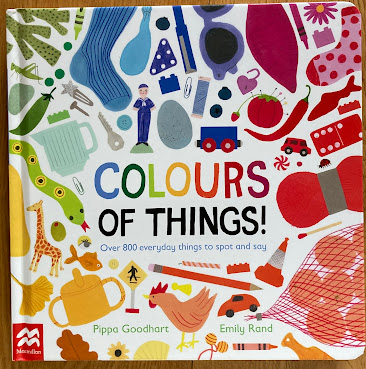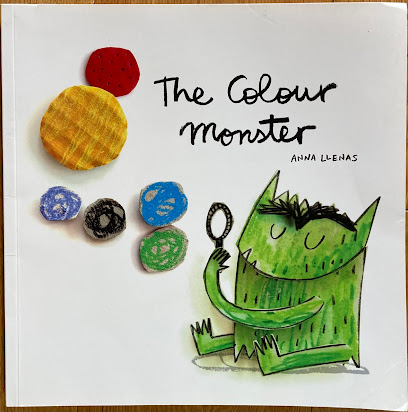I have been reading this book:
 |
How to Fly A Horse: The Secret History of Creation,
Invention and Discovery by Kevin Ashton
|
Ashton is a technology pioneer, whose own personal journey
as an inventor proves his point. It was only as a result of tens of thousands
of hours of work, filled with failures, mistakes and flashes of inspiration,
that he was able to build ‘the internet of
things’.
He debunks the myth that creativity is the remit of the few
and that geniusus create in a dramatic moment of ‘eureka’ inspiration. According
to Ashton, there are no tricks or quick fixes, just hours of ordinary to reach
the extraordinary.
The title is intriguing, isn’t it? It comes from the story of
the Wright Brothers’ process of inventing a flying machine. They were the first
people to fly, not because they were the first to build an airplane (many
people had similar ideas!), but because they problem-solved how to make it fly
step-by-step, rather than in one big leap. They observed how birds flew, but
when they tried to replicate this, they noticed their contraption moved
erratically like an 'untrained horse'. Solving the problem of air gliding plus
balancing when dealing with a ‘bucking horse’, required failure, lateral
thinking and resilience until they eventually put all the parts together.
 |
The Wright Flyer airborne during the first powered flight at Kitty Hawk,
North Carolina, United States of America, 17 December 1903. Orville
Wright is the pilot while Wilbur Wright runs alongside. |
What does his have to do with being a picture book writer? Lots!
Here are some of my take-aways:
Ahston argues that creativity is innate, as much part of
being human as walking, talking or eating. People are not equally creative,
just like we are not all equally athletic or mathematical thinkers, but
everyone can do it.
• Creation is the result of many small incremental steps: when we look carefully, we can see that every innovation has been built on the
foundation of what has come before us. So, we are building on the sum of the work
of authors and illustrators who have preceded us, across generations, continents
and cultures. There is always room to innovate further.
So, when we look at the competition and feel overwhelmed by all the amazing books already out there, or when we think someone else has already covered a topic about which we'd like to create a picture book, we can take a deep breath and continue.
• Everything you start with will probably be rubbish: what
we first produce will not be as good as what we can create once it’s been reviewed,
fine-tuned, refined, or even thrown out and begun again. So, start we must.
“Good
writing is bad writing well edited” Ashton writes.
So it’s important to just start, repeat and repeat again. Stretch
ourselves to power through the nay-saying voices in our head and the temptations
to get way-laid by interruptions (coffee, email, researching randomia, the
washing, the dog . . .). Just work!
• Rejection is essential: everything is created by the
process of failure to foundation.
When we look around and admire others’ amazing work, we often
do not see what was thrown away, what failed and what didn’t make the cut. Rubbish
is the foundation for innovation. Something to remember, too, when we receive those rejection letters when submitting - it's an opportunity to try again and do better!
“Innovation is whatever remains when all our
failures are removed.”
In every picture book I’ve ever edited, there is a whole
process that unfolds behind the scenes, but you wouldn’t glean any of the
frustrations, micro-decisions, re-thinks, and amends that go into each spread from
looking at the finished book. Which is how it should be! Here is just one example of this:
 |
From Cotton Cloud Refuses to Rain by Elizabeth F Hill and Hannah George (published by Five Quills)
|
 |
| Figuring out how to show this turning point moment where Cotton Cloud is upset, thinking her rain might have made people sad was tricky. To give it more impact, we suggested zooming in and deleting the detail on the ground. The editor, designer, author and illustrator collaborated closely to solve this problem. (From Cotton Cloud Refuses to Rain by Elizabeth F Hill and Hannah George) |
|
|
 |
The final artwork highlights the characters' emotional turning point with much more impact and draws in readers into the moment. (From Cotton Cloud Refuses to Rain by Elizabeth F Hill and Hannah George)
|
 |
| The next spread needed adjusting too. (Picture books have an annoying habit of when you fix one thing, another unravels, but ultimately the end result is so much better!) Here, we see how Cotton Cloud's
rain has brought joy and growth to the parched landscape, animals and
people. This early rough was a great starting point, but we wanted to
add more expression and emotion to this key moment. (From Cotton Cloud Refuses to Rain by Elizabeth F Hill and Hannah George) |
 |
| In this new rough, the characters are more prominent and Hannah's signature and delightful details draw in the readers with their stories. The author and I discussed amending the text to accompany the revised image - see final artwork below. (From Cotton Cloud Refuses to Rain by Elizabeth F Hill and Hannah George) |
 |
| (From Cotton Cloud Refuses to Rain by Elizabeth F Hill and Hannah George) |
We each bring our point of difference, our unique ‘us’ to
our work. It’s important to create prolifically, building on each other’s creativity
in order to innovate.
“There are more people creating, so there are more tools
in the tool chain . . . so we have more time, space, health education, and information
for creating.” Each creator is essential – and there’s room for all of us.
I found Ashton's book fascinating and I’d highly recommend it for
the curious creator. More importantly, reading
its stories provided me with an uplifting sense of the possible in what I might create, renewed
confidence and hope.
_________________________________________________________________
 Natascha Biebow, MBE, Author, Editor and Mentor
Natascha Biebow, MBE, Author, Editor and Mentor
Want to level up your picture books? I am launching a new course!
Natascha is the author of the award-winning The Crayon Man: The True Story of the Invention of Crayola Crayons,
illustrated by Steven Salerno, winner of the Irma Black Award for
Excellence in Children's Books, and selected as a best STEM Book 2020.
Editor of numerous prize-winning books, she runs
Blue Elephant Storyshaping,
an editing, coaching and mentoring service aimed at empowering
writers and illustrators to fine-tune their work pre-submission, and is
the Editorial Director for Five Quills. Find out about her picture book webinar courses! She is Co-Regional
Advisor (Co-Chair) of SCBWI British Isles and was awarded an MBE for her services to children's book writers and illustrators. Find her at www.nataschabiebow.com

























